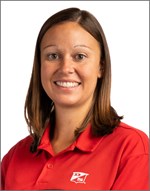Fall Recommendations for 2022 Planting
BY Dairyland Seed Agronomy Team
FALL BURNDOWN RECOMMENDATIONS
Making note of what worked or what fell short of expectations, as far as weed control this year, can aid in your decision-making for your plan of attack on weeds next year.
One weed control measure to consider, that can be accomplished this fall, is a burndown to control winter annuals and pesky perennials like Dandelion. Early control of fall germinating winter annuals such as Marestail, Field Pennycress, Chickweed and others can allow for a clean start to weed control in the spring especially in no-till systems. Winter annuals can be heartier if allowed to overwinter which can make them more difficult to control in the spring.
Considerations for fall burndown applications:
- Common herbicides used are dicamba, 2-4,D or a combination of these two products. Common names for combination products are WeedMaster® and Brash®, among others. Follow label recommendations on rates and adjuvant for these products.
- Temperature ranges to keep in mind for application. Control is best achieved when daytime temperatures are 50 degrees F or greater and nighttime temperatures are 40 degrees F or greater.
- The addition of Glyphosate to a fall burndown mix is not necessary unless perennial weeds are present. In most cases, grass weeds that are present will winter kill.
- In fields with past weed issues, a residual herbicide can be used this fall to aid in keeping those fields cleaner longer. There are several options for fall residuals be sure to consult the label for plant back restrictions for possible spring crops.
If you have questions on specific products or weed identification, contact your Dairyland Seed District Sales Manager or Regional Agronomist.
FALL ANHYDROUS APPLICATION
As prices of crop inputs increase, evaluation of anhydrous ammonia application this fall is being scrutinized. One reason is the economics. Should I purchase and apply now, purchase and apply in the spring, or wait on both until spring? There will be plenty of opinions to evaluate. We suggest you carefully consider them all and then put together a plan that works for your operation.
Typically, there can be economic advantages to fall application if you can reduce N loss and that is the largest challenge for fall anhydrous. Even though this may be the most economical time and form of nitrogen, it is still not cheap. Given the increased costs and environmental considerations of N loss, applying fall anhydrous without a nitrification inhibitor is not a good practice. Spend the extra money to protect your nitrogen investment as well as the environment.
The biggest factor to being successful and minimizing losses is applying late enough in the fall. The goal is to get the product in the ground when soil temperatures are in the 50’s. At this temperature, biological activity begins to slow and reduces the risk of de-nitrification. In addition, at that time of year, temperatures should continue to fall finally ceasing biological activity. It is crucial to watch the short and long-term forecasts on temperatures. To date, it has been a rather abnormally warm harvest season and relatively dry through September. Recent weather patterns have brought moisture and moderate temperatures. In some areas we may be able to get the toolbars running at an appropriate time and manner.
A fall application can reduce the spring workload and widen your nitrogen application window. You may not cover every acre, but perhaps enough to distribute the acres needing to be addressed in the spring.
Another consideration is soil type. This method of nitrogen management is not suited for all soil types. Typically, it is reserved for more level or gently rolling fields with heavier soil make up. Steeply sloping fields can be prone to gully erosion in the knife tracks of the tool bar. Too coarse of soil, and we will encounter excessive losses.
In summary, consider:
- Price of nitrogen source
- Workload management
- Fall weather
- Soils type and slope
JOIN THE DAIRYLAND SEED ELITE PRODUCER CLUB
You can be a member of Dairyland Seed’s Elite Producer Club by submitting photos or testimonials of high performing products! Simply test a picture or testimonial of your high performing products to 913-DS-YIELD or 913-379-4353. The program runs from August 15 through December 1, 2021.
Participants will receive a free Dairyland Seed t-shirt (one per entry) and “Elite Yield Club” Certificate. All corn grain, corn silage and soybean products are eligible.
Qualifying products for “Elite Yield” Contest (one winner per family, per region, prize is 3 free units of product that was entered):
Region 1 = DS-3366 family; DS-3550 family; DS-4018 family
Region 2 = DS-3550 family; DS-4018 family; DS-4878 family; DS-5144Q
Region 3 = DS-4310 family; DS-4878 family; DS-5144Q
Region 4 = DS-3366 family; DS-3550 family; DS-4014Q; DS-4310 family
Information required in text: Participant; Location; Product; Yield in Bushels or Tons; T-Shirt Size; DSM; Mailing address if different than participant.
2021 YIELDMASTER CONTEST
Fall harvest kicks off the annual Dairyland Seed Corn, Silage and Soybean Yieldmaster Contest. Take a moment to enter your outstanding yields and you just might be our 2021 winner!
Seed Credits for Winners
- The National Corn, Soybean and Silage Yieldmasters will each receive a $2500 seed credit.
- First Place Corn, Silage and Soybean winners from each zone receive a $1000 seed credit.
- Second Place Corn, Silage and Soybean winners from each zone receive a $500 seed credit.
Entries can be submitted online at www.dairylandseed.com or via your DSM who can submit your entry using the iPad app. Silage entries are due November 3, 2021. Corn and Soybean entries are due December 3, 2021.
 |
 |
 |
 |
 |
| Brian Weller Western Region 507.456.3034 |
Dan Ritter Central Region 219.863.0583 |
Branden Furseth Northern Region 608.513.4265 |
Mark Gibson Eastern Region 260.330.8968 |
Amanda Goffnett Eastern Region 989.400.3793 |
